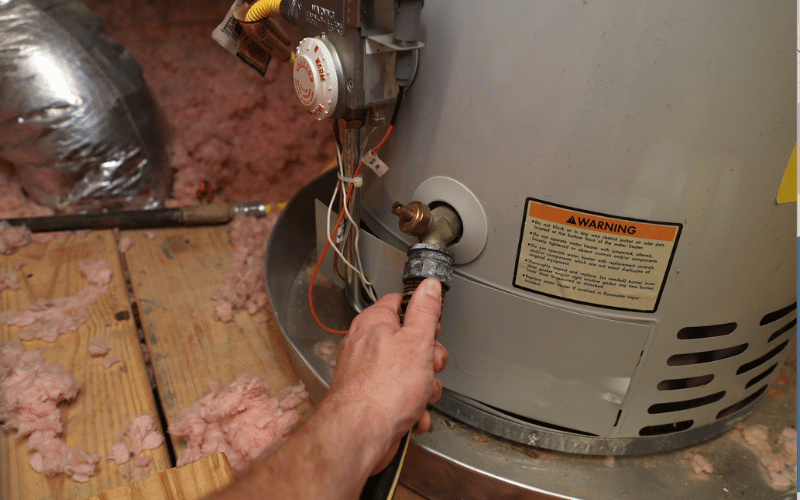Expert Advice on Maintaining Your Home's Hot Water System
Expert Advice on Maintaining Your Home's Hot Water System
Blog Article
We have come across this article about Water Heater Maintenance Tips You Can't Afford to Forget below on the web and believe it made perfect sense to write about it with you over here.

Warm water is vital for daily convenience, whether it's for a revitalizing shower or washing dishes. To guarantee your warm water system runs effectively and lasts longer, normal upkeep is essential. This article gives sensible ideas and insights on just how to preserve your home's hot water system to stay clear of interruptions and pricey repairs.
Intro
Maintaining your home's warm water system might appear challenging, yet with a few basic steps, you can guarantee it runs efficiently for several years to find. This guide covers everything from recognizing your warm water system to DIY upkeep tips and recognizing when to hire specialist assistance.
Significance of Maintaining Your Hot Water System
Routine upkeep not only expands the lifespan of your warm water system but additionally guarantees it runs successfully. Disregarding upkeep can cause reduced performance, higher power expenses, and also premature failing of the system.
Signs Your Hot Water System Requirements Maintenance
Understanding when your warm water system needs interest can prevent major issues. Watch out for indicators such as inconsistent water temperature level, strange noises from the heating system, or rustic water.
Recognizing Your Hot Water System
Before diving right into upkeep tasks, it's practical to recognize the fundamental parts of your hot water system. Usually, this consists of the water heater itself, pipes, anode rods, and temperature level controls.
Monthly Maintenance Tasks
Routine month-to-month checks can aid catch minor problems prior to they escalate.
Flushing the Water Heater
Flushing your hot water heater gets rid of debris build-up, enhancing performance and lengthening its life.
Checking and Replacing Anode Rods
Anode rods avoid rust inside the container. Inspecting and replacing them when worn is vital.
Evaluating and Readjusting Temperature Level Setups
Adjusting the temperature settings guarantees optimal performance and safety.
DIY Tips for Maintenance
You can do numerous upkeep tasks yourself to keep your hot water system in leading problem.
Checking for Leaks
Frequently examine pipes and connections for leakages, as these can bring about water damages and higher costs.
Examining Stress Alleviation Valves
Evaluating the pressure relief valve ensures it works correctly and prevents too much stress accumulation.
Insulating Pipes
Shielding hot water pipelines lowers warmth loss and can conserve energy.
When to Call a Professional
While DIY maintenance is beneficial, some problems need expert knowledge.
Complex Concerns Requiring Specialist Aid
Examples consist of significant leaks, electric issues, or if your water heater is consistently underperforming.
Regular Expert Maintenance Conveniences
Expert maintenance can consist of extensive evaluations, tune-ups, and ensuring conformity with safety criteria.
Final thought
Regular upkeep of your home's hot water system is crucial for effectiveness, longevity, and expense savings. By adhering to these suggestions and recognizing when to seek specialist help, you can make certain a reputable supply of hot water without unexpected interruptions.
How to Maintain an Instant Hot Water Heater
Before tinkering with your hot water heater, make sure that it’s not powered on. You also have to turn off the main circuit breaker and shut off the main gas line to prevent accidents. Also turn off the water valves connected to your unit to prevent water from flowing into and out of the appliance. 2. When you’re done, you have to detach the purge valves’ caps. These look like the letter “T†and are situated on either side of the water valves. Doing so will release any pressure that has accumulated inside the valves while at the same time avoid hot water from shooting out and burning your skin. 3. When the purge valves’ caps are removed, you have to connect your hosing lines to the valves. Your unit should have come with three hoses but if it didn’t, you can purchase these things from any hardware or home repair shops. You can also get them from retail stores that sell water heating systems. Read the user’s manual and follow it to complete this task properly. When the hosing lines are connected, open the purge port’s valves. 4. You should never use harsh chemical cleaners or solutions when cleaning your unit. Make use of white vinegar instead. It should be undiluted and you’ll probably use about 2 gallons. 5. Now flush your water heater. This task should probably take about 40 minutes. We can’t give you specific directions for this because the procedure is carried out depending on the type, model and brand of your heater. With that being said, refer to the user’s manual. 6. When you’re done draining the unit, you have to turn off the purge port valves again. Remove the hosing lines that you earlier installed on each of the water valves. Put the valve caps (purge port) back in their respective places and be very careful so as not to damage the rubber discs that are found inside these caps. 7. Now that everything’s back in place, check your user’s manual again to find out how to reactivate your water heating system. 8. Once it is working, turn one of your hot water faucets on just to let air pass through the heater’s water supply pipes. Leave the tap on until water flows smoothly out of it. https://www.orrplumbing.com/blog/2014/september/how-to-maintain-an-instant-hot-water-heater/

We were shown that write-up about How to Maintain a Hot Water Heater in a Few Simple Steps through a pal on another web property. Loved our blog entry? Please quickly share it. Let other people discover it. Many thanks for going through it.
Go Company Report this page